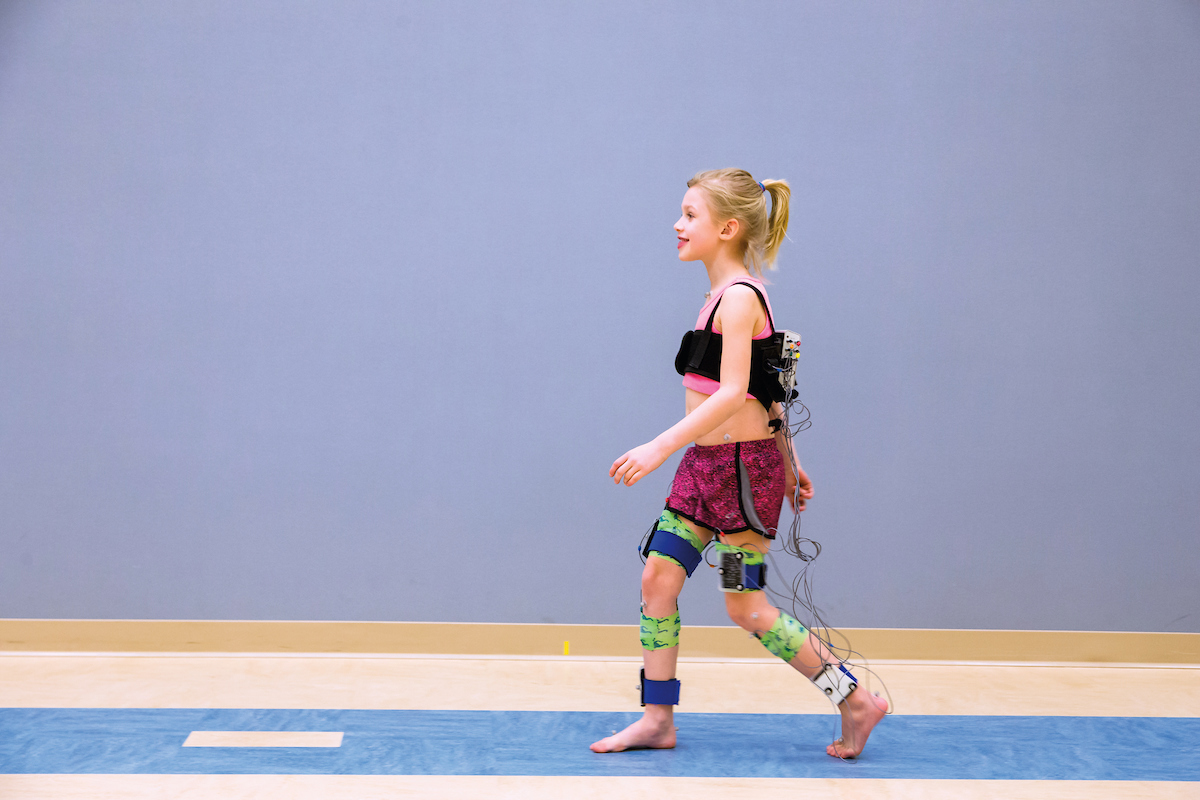What is gait and motion analysis?
The word “gait” refers to an individual’s way of walking. Although people might have similar walking patterns, the way their muscles and joints work together can vary widely. Gait and motion analysis helps to understand and recognize how orthopedic, neurological, and muscular conditions can hinder the movements important for daily living. The innovative video and computer technology at Gillette Children’s James R. Gage Center for Gait and Motion Analysis captures movements, muscle activity, and forces that the eye can’t see.
Information from gait analysis—together with imaging scans, medical history, and the results of other evaluations—helps your care team recommend the best treatments for a wide variety of conditions that disrupt movement.
Gillette Children’s operates one of the world’s busiest and most respected clinical gait and motion analysis centers. The James R. Gage Center for Gait and Motion Analysis is known worldwide for its expertise in diagnosing and planning treatments for people with walking and movement disorders.
Who benefits from a gait analysis?
Children and young adults with complex conditions and injuries who have concerns about their walking function and ability are often candidates for gait and movement analysis. Your child might benefit from a gait assessment if they have:
- Cerebral palsy.
- Brain injury and related neurotrauma.
- Complex movement disorders.
- Conditions that cause toe-walking.
- Limb-length discrepancy and limb differences.
- Misaligned bones and foot abnormalities.
- Spina bifida.
- Other neurological or orthopedic conditions.
- Amputations.
Movement Analysis for Upper Extremities
Although gait analysis is primarily used to understand walking problems, the movement analysis technology at Gillette can document the movement and muscle activity of the arms and hands. Your child may benefit from an upper extremity assessment if they have hand and upper extremity movement problems.
Movement Analysis for Teens and Adults
Children who experience difficulty with movement often need ongoing evaluation and treatment as they transition into teens and adults. If you are a teen or an adult, you might have motion analysis for the first time because your condition has begun causing pain and stiffness with age. At Gillette Children’s, you’ll get health care tailored to your specific needs.
Gait and Motion Analysis Services at Gillette Children's
At Gillette, you’ll work with an expert team that includes technicians, engineers, therapists, and surgeons who are experts in the study of human movement.
Your team of specialists will develop an integrated care plan and help you navigate the services you need, which might include:
Get a Second Opinion
Getting a second opinion is particularly helpful with a complex or unclear diagnosis or treatment that is no longer working. Often having another expert’s opinion can help you feel more knowledgeable and confident when taking the next steps to care for your child.
 Home Page
Home Page




